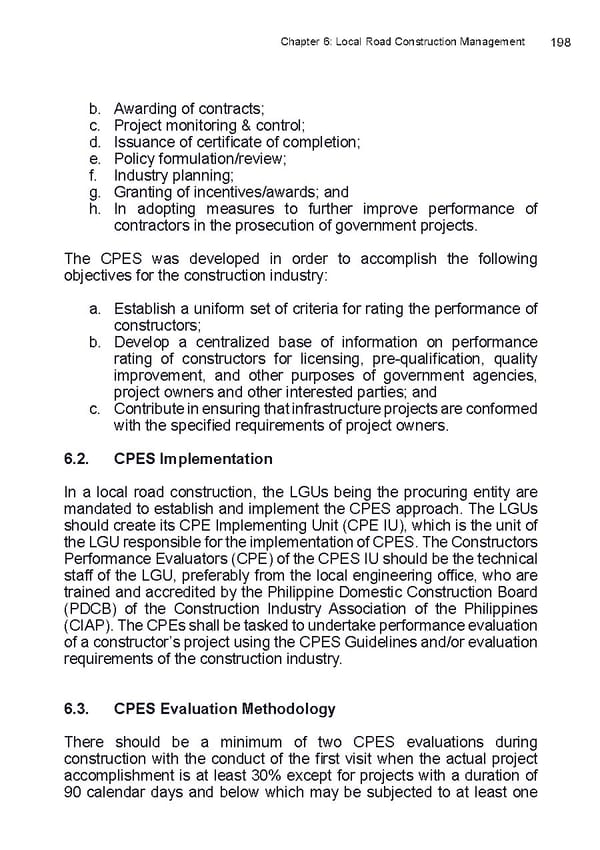Chapter 6: Local Road Construction Management 198 b. Awarding of contracts; c. Project monitoring & control; d. Issuance of certiifcate of completion; e. Policy formulation/review; f. Industry planning; g. Granting of incentives/awards; and h. In adopting measures to further improve performance of contractors in the prosecution of government projects. The CPES was developed in order to accomplish the following objectives for the construction industry: a. Establish a uniform set of criteria for rating the performance of constructors; b. Develop a centralized base of information on performance rating of constructors for licensing, pre-qualiifcation, quality improvement, and other purposes of government agencies, project owners and other interested parties; and c. Contribute in ensuring that infrastructure projects are conformed with the speciifed requirements of project owners. 6.2. CPES Implementation In a local road construction, the LGUs being the procuring entity are mandated to establish and implement the CPES approach. The LGUs should create its CPE Implementing Unit (CPE IU), which is the unit of the LGU responsible for the implementation of CPES. The Constructors Performance Evaluators (CPE) of the CPES IU should be the technical staff of the LGU, preferably from the local engineering oiffce, who are trained and accredited by the Philippine Domestic Construction Board (PDCB) of the Construction Industry Association of the Philippines (CIAP). The CPEs shall be tasked to undertake performance evaluation of a constructor’s project using the CPES Guidelines and/or evaluation requirements of the construction industry. 6.3. CPES Evaluation Methodology There should be a minimum of two CPES evaluations during construction with the conduct of the ifrst visit when the actual project accomplishment is at least 30% except for projects with a duration of 90 calendar days and below which may be subjected to at least one
 LRM Manual CMGP Page 197 Page 199
LRM Manual CMGP Page 197 Page 199